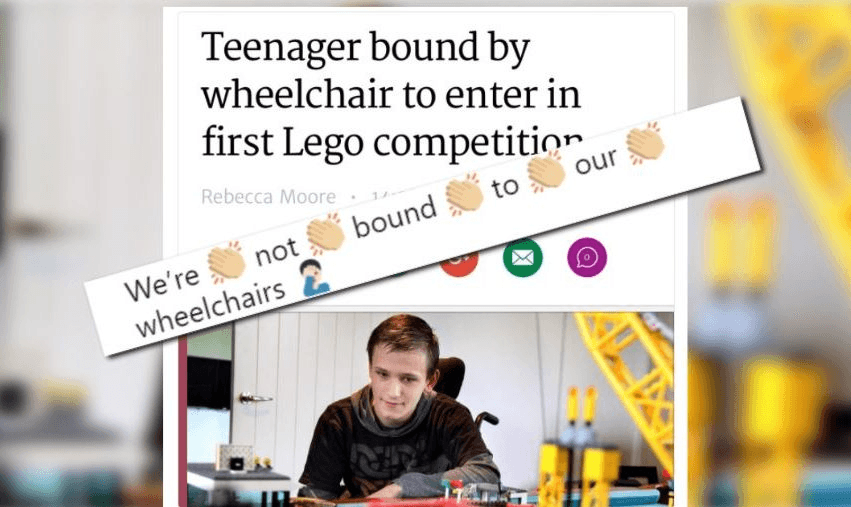Last week Red Nicholson tweeted a word of advice to Stuff, and found the system works. But to help us avoid bungling it in the first place, he offers some extra advice for journalists and editors on disability-related news and language
Most days on Twitter are spent shouting enlightened reckons into the social media void, desperate for your woke insight to be picked up and amplified by anyone at all. And most days, to the detriment of the world, your insights are routinely ignored.
But very occasionally you’ll tweet an article, caption it with some super obvious commentary on positive disability language, and it goes on to be mashed-up by self-professed “international crouton” Hend Amry, who pushes it to 10,000 retweets and almost 50,000 likes.
Wednesday was one of those days.
We’re not bound to our wheelchairs pic.twitter.com/LCSELRY48f
— Red Nicholson (@rednz) April 24, 2018
When Twitter works: pic.twitter.com/Se3lQwquKf
— Hend Amry (@LibyaLiberty) April 24, 2018
The fact said tweet received such an enthusiastic response remains something of a mystery to me. For most disabled people, advising against the use of the terms “wheelchair bound” and “confined to a wheelchair” is about as profound as cautioning against the casual wielding of any number of c- or n-words. Of course, the other half of its appeal was the fact that Jeff Tollan, Stuff homepage editor, also noticed my tweet and modified the offending article in response, showing a remarkable willingness to listen given the trend of shouting down criticism which seems so in vogue in 2018.
So in the hope that I never again achieve my Biggest Twitter Moment in pursuit of the most basic disability language guidance to journalists, here are five tips to Get Your Disability-Related Story Right:
1. Language matters. Avoid: wheelchair-bound, confined, suffering, afflicted, handicapped, retarded, or any other word that suggests helplessness, a lack of agency or a dependent and permanent connection between a person and a mobility aid. They are usually quite separate.
2. Ask yourself: is it news? Consider the headline above. “Teen bound by wheelchair to enter first Lego competition”. Unless the competition is a world championship (it’s not) then what you’re really doing is celebrating the achievement of someone you expected a lot less from, which is, you know, problematic.
3. Also ask: does this story fit the mould of inspiration porn? If you haven’t already, watch Stella Young’s seminal TED talk on disability language, and then follow her rules. Easy.
4. Check your framing. My friend Philip Patston talks about how news articles focused on disabled people are usually framed in terms of ‘The Three Ts’: Triumph, Tragedy, or Trauma. Triumph – overcoming a barrier [considered by an able-bodied person to be newsworthy]; Tragedy – an event occurring [considered by an able-bodied person to be terrible]; Trauma – experiencing or enduring something [considered undesirable by an able-bodied person]. Tl;dr: frame stories about disabled people in a way that is ambitious, positive and exciting.
5. Have you included a range of disabled voices? In the same way you would avoid a story about Māori issues being punctuated by Pākeha perspectives (right?), and a story about women’s issues interrupted by the perspectives of men (right?), you should definitely avoid constructing a story focused on a disabled person encircled by the lukewarm takes of patronising able-bodied folk.
If you’re keen to learn more, there are a bunch of useful guidelines over at the Office for Disability Issues website, and if you want to get in touch, tweet me @rednz; you’ll find me shouting into the void, along with everyone else.
The Bulletin is The Spinoff’s acclaimed, free daily curated digest of all the most important stories from around New Zealand delivered directly to your inbox each morning.
